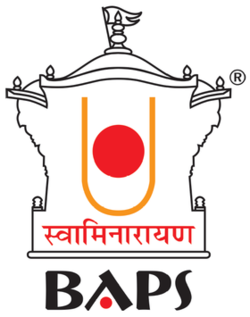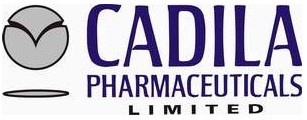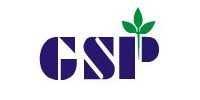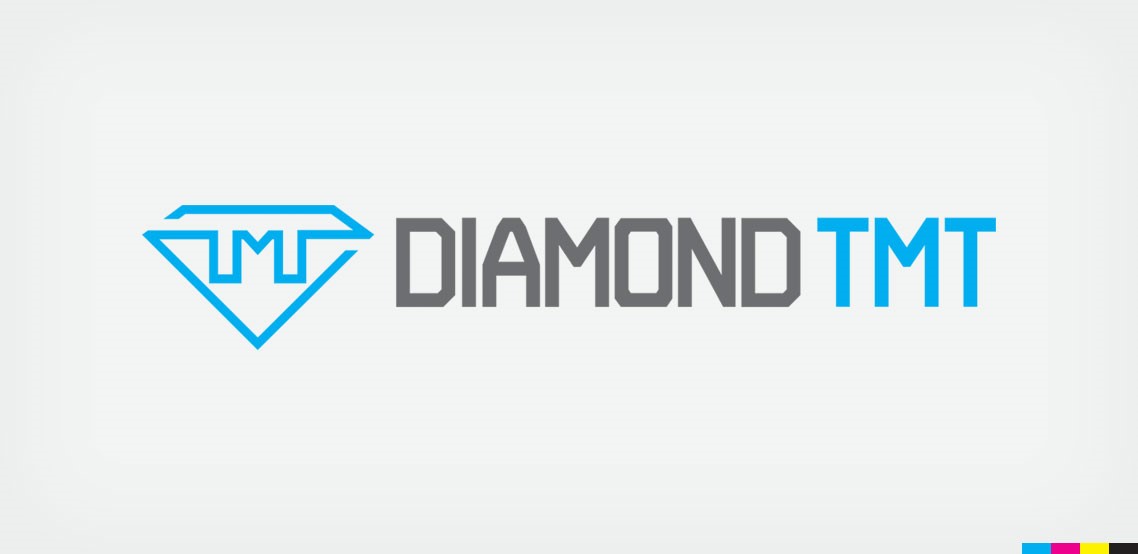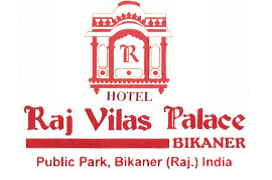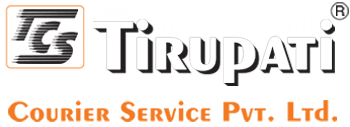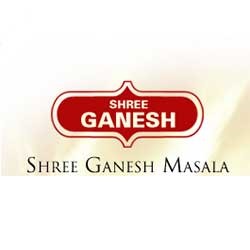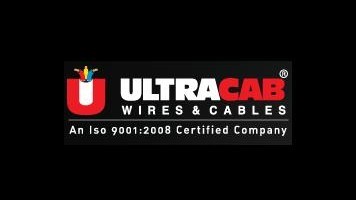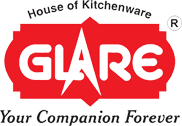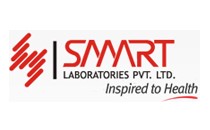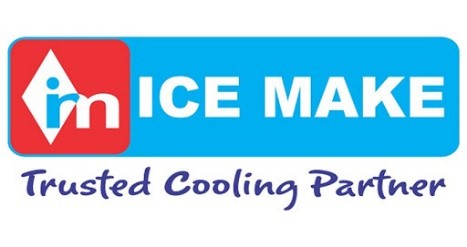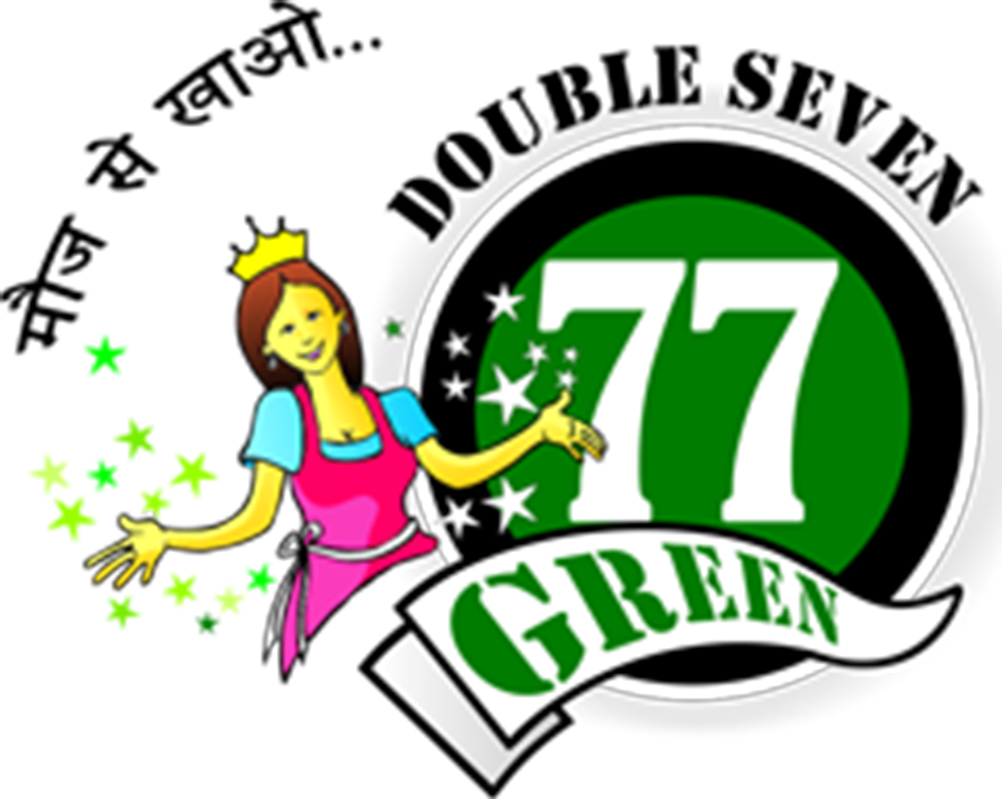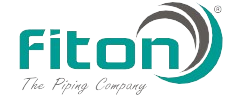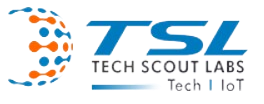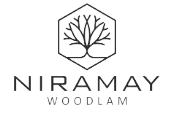‘Design’ means only the features of shape, configuration, pattern or ornament or composition of lines or colour or combination thereof applied to any article whether two dimensional or three dimensional or in both forms, by any industrial process or means, whether manual, mechanical or chemical, separate or combined, which in the finished article appeal to and are judged solely by the eye, but does not include any mode or principle or construction or any thing which is in substance a mere mechanical device, and does not include any trade mark, as define in clause (v) of sub-section of Section 2 of the Trade and Merchandise Marks Act, 1958, property mark or artistic works as defined under Section 2(c) of the Copyright Act, 1957.
Under the Designs Act, 2000 the “article” means any article of manufacture and any substance, artificial, or partly artificial and partly natural; and includes any part of an article capable of being made and sold separately;
Object of the Designs Act to protect new or original designs so created to be applied or applicable to particular article to be manufactured by Industrial Process or means. Sometimes purchase of articles for use is influenced not only by their practical efficiency but also by their appearance. The important purpose of design Registration is to see that the artisan, creator, originator of a design having aesthetic look is not deprived of his bonafide reward by others applying it to their goods.
- The design should be new or original, not previously published or used in any country before the date of application for registration. The novelty may reside in the application of a known shape or pattern to new subject matter. Practical example:The known shape of “Kutub Minar” when applied to a cigarette holder the same is registrable. However, if the design for which application is made does not involve any real mental activity for conception, then registration may not be considered.
- The design should relate to features of shape, configuration, pattern or ornamentation applied or applicable to an article. Thus, designs of industrial plans, layouts and installations are not registrable under the Act.
- The design should be applied or applicable to any article by any industrial process. Normally, designs of artistic nature like painting, sculptures and the like which are not produced in bulk by any industrial process are excluded from registration under the Act.
- The features of the design in the finished article should appeal to and are judged solely by the eye. This implies that the design must appear and should be visible on the finished article, for which it is meant. Thus, any design in the inside arrangement of a box, money purse or almirah may not be considered for showing such articles in the open state, as those articles are generally put in the market in the closed state.
- Any mode or principle of construction or operation or any thing which is in substance a mere mechanical device, would not be registrable design. For instance a key having its novelty only in the shape of its corrugation or bend at the portion intended to engage with levers inside the lock associated with, cannot be registered as a design under the Act. However, when any design suggests any mode or principle of construction or mechanical or other action of a mechanism, a suitable disclaimer in respect there of is required to be inserted on its representation, provided there are other registrable features in the design.
- The design should not include any Trade Mark or property mark or artistic works as define under the Copyright Act, 1957.
No. Because once the alleged Design i.e., ornamentation is removed only a piece of paper, metal or like material remains and the article referred ceases to exist. Article must have its existence independent of the Designs applied to it. [Design with respect to label was held not registrable, by an Order on civil original case No. 9-D of 1963, Punjab, High Court]. So, the Design as applied to an article should be integral with the article itself.
When an application for registration of a Design is in order, it is accepted and registered and then a certificate of registration is issued to the applicant. However, a separate request should be made to the Controller for obtaining a certified copy of the certificate for legal proceeding with requisite fee.
The Register of Designs is a document maintained by The Patent Office, Kolkata as a statutory requirement. It contains the design number, class number, date of filing (in this country) and reciprocity date (if any), name and address of Proprietor and such other matters as would affect the validity of proprietorship of the design and it is open for public inspection on payment of prescribed fee & extract from register may also be obtained on request with the prescribed fee.
The registration of a design confers upon the registered proprietor ‘Copyright’ in the design for the period of registration. ‘Copyright’ means the exclusive right to apply a design to the article belonging to the class in which it is registered.
The duration of the registration of a design is initially ten years from the date of registration, but in cases where claim to priority has been allowed the duration is ten years from the priority date.
This initial period of registration may be extended by further period of 5 years on an application made in prescribed form before the expiry of the said initial period of Copyright.
The proprietor of a design may make application for such extension even as soon as the design is registered.
The date of registration except in case of priority is the actual date of filing of the application. In case of registration of design with priority, the date of registration is the date of making an application in the reciprocal country.
No. A registered design, the copyright of which has expired cannot be re-registered.
For ascertaining whether registration subsists in respect of a design, a request should be made to the Patent Office, Kolkata. If the serial number of the registered design is known, the request should be made on Form 6, otherwise on Form 7, together with fee of Rs. 500/- or Rs. 1,000/- respectively. Each such request should be confined to information in respect of a single design.
Piracy of a design means the application of a design or its imitation to any article belonging to class of articles in which the design has been registered for the purpose of sale or importation of such articles without the written consent of the registered proprietor. Publishing such articles or exposing terms for sale with knowledge of the unauthorized application of the design to them also involves piracy of the design.
Yes, it would be always advantageous to the registered proprietors to mark the article so as to indicate the number of the registered design except in the case of Textile designs. Otherwise, the registered proprietor would not be entitled to claim damages from any infringer unless the registered proprietor establishes that the registered proprietor took all proper steps to ensure the marking of the article, or unless the registered proprietor show that the infringement took place after the person guilty thereof knew or had received notice of the existence of the copyright in the design.
The registration of a design may be cancelled at any time after the registration of design on a petition for cancellation.
No, design means a conception or suggestion or idea of a shape or pattern which can be applied to an article or intended to be applied by industrial process or means. Example- a new shape which can be applied to a pen thus capable of producing a new appearance of a pen on the visual appearance. It is not mandatory to produce the pen first and then make an application.
Why is it important for filing the application for registration of design at the earliest possible ?
First-to-file rule is applicable for registrability of design. If two or more applications relating to an identical or a similar design are filed on different dates only first application will be considered for registration of design.
Yes, the same applicant can apply again since no publication of the abandoned application is made by the Patent Office, provided the applicant does not publish the said design in the meanwhile.
After registration of designs the most relevant view(s) of the article alongwith other bibliographic data will be available in the official gazette, which is being published on every Saturday. However, such provision cannot be implemented at this stage due to insufficient infrastructure.
Yes, it is possible to transfer the right through assignment, agreement, transmission with terms and condition in writing or by operation of law. However, certain restrictive conditions not being the subject matter of protection relating to registration of design should not be included in the terms and condition of the contract/agreement etc.
India is one of the countries party to the Paris Convention so the provisions for the right of priority are applicable. On the basis of a regular first application filed in one of the contracting state, the applicant may within the six months apply for protection in other contracting states, latter application will be regarded as if it had been filed on the same day as the first application.
A registration of design will cease to be effective on non-payment of extension fee for further term of five years if the same is not paid before the expiry of original period of 10 years. However, new provision has been incorporated in the Act so that lapsed designs may be restored provided the following conditions are satisfied:
- Application for restoration is filed within one year from the date of lapsed stating the ground for such non-payment of extension fee with sufficient reasons.
- If the application for restoration is allowed the proprietor is required to pay the extension fee and an additional fee and finally the lapsed registration is restored.
Name of the registered proprietor, address or address for service can be altered in the register of designs provided this alteration is not made by way of change of ownership through conveyance i.e. deed of assignment, transmission, licence agreement or by any operation of law.
Yes, registered designs are open for public inspection only after publication in the official gazette on payment of prescribed fee.
The application for registration of design can be filed by the applicant himself or through a professional person (i.e. patent agent, legal practitioner). However, for the applicants not resident of India an agent residing in India has to be employed.
Once a design is registered, it gives the legal right to bring an action against those persons (natural/legal entity) who infringe the design right, in the Court not lower than District Court in order to stop such exploitation and to claim any damage to which the registered proprietor is legally entitled. However, it may please be noted that if the design is not registered under the Designs Act, 2000 there will be no legal right to take any action against the infringer under the provisions of the Designs Act, 2000. The Patent Office does not become involved with any issue relating to enforcement of right accrued by registration, similarly The Patent Office does not involve itself with any issue relating to exploitation or commercialization of the registered design.
If a group of articles meets the following requirements then that group of articles may be regarded as a set of articles under the Designs Act, 2000:
- Ordinarily on sale or intended to be used together.
- All having common design even though articles are different (same class).
- Same general character.
Generally, an article having the same design and sold in different sizes is not considered as a set of articles. Practical example: “Tea set”, “Pen set”, “Knife set” etc.
What is an artistic work which are not subject matter of registration ?
An artistic work as defined under Section 2(c) of the Copyright Act, 1957 is not a subject matter for registration which reads as follows:
“Artistic works” means: –
- A painting, a sculpture, a drawing (including a diagram, map, chart or plan) on engraving or a photograph, whether or not such work possesses artistic quality.
- A work of architecture and
- Any other work of artistic craftsmanship.
In the third Schedule of Design Rules, 2001 the classification of goods has been mentioned. The classification is based on Locarno Agreement. Only one class number is to be mentioned in one particular application. It is mandatory under the Rules. This classification has been made on the basis of Articles on which the design is applied. Practical Example: If the design is applied to a toothbrush it will be classified under class 04-02. Similarly if the design is applied to a calculator, it will be classified in class 18-01. Subsequent application by the same proprietor for registration of same or similar design applied to any article of the same class is possible, but period of registration will be valid only upto period of previous registration of same design.
A mark used for denoting that movable property belongs to a particular person is called a property mark. It means that marking any movable property or goods, or any case, package or receptacle containing goods; or using any case, package or receptacle, with any mark thereon. Practical example: The mark used by the Indian Railway on their goods may be termed as a Property Mark for the purpose of easy identification of the owner.
“Design” means only the features of shape, configuration, pattern, ornament or composition of lines or colours applied to any article whether in two dimensional or three dimensional or in both forms, by any industrial process or means, whether manual, mechanical or chemical, separate or combined, which in the finished article appeal to and are judged solely by the eye; but does not include any mode or principle of construction or anything which is in substance a mere or principle of construction or anything which is in substance a mere mechanical device, and does not include any trade mark as defined in clause (v) of sub-section (1) of section 2 of the Trade and Merchandise Marks Act, 1958 (43 of 1958) or property mark as defined in section 479 of the Indian Penal Code (45 of 1860) or any artistic work as defined in clause (c) of section 2 the Copyright Act, 1957 (14 of 1957).
The outward appearance of a product or part of it, resulting from the lines, contours, colours, shape, texture, materials and/or its ornamentation.
A design to be registrable must be new or original. Original means originating from the author of the design. New applications of old designs are registrable. Designs which are not new or original or disclosed to the public anywhere in India or in any other country or not significantly distinguishable from known designs or combinations of known designs or comprising scandalous or obscene matter are not registrable. This Indian legal position is more on the lines excluding non-registrable designs by identifying the categories of designs not registrable rather than positively reciting what are registrable designs.
Object of the Designs Act is to protect new or original designs so created to be applied or applicable to particular article to be manufactured by Industrial Process or means. Sometimes purchase of articles for use is influenced not only by their practical efficiency but also by their appearance. The important purpose of design Registration is to see that the artisan, creator, originator of a design having aesthetic look is not deprived of his bonafide reward by others applying it to their goods.
A product can be any industrial or handicraft item including packaging, graphic symbols and typographic typefaces but excluding computer programs. It also includes products that are composed of multiple components, which may be disassembled and reassembled
The design or shape of a product can be synonymous with the branding and image of a company and can become an asset with monetary value that could increase. If you do not apply for protection others may benefit from your investments.
A utility model is an exclusive right granted for an invention similar to a patent. It is sometimes referred to as a petty patent or an innovation patent. It may be granted to anyone who invents or discovers any new and useful process, machine, article of manufacture, compositions of matter, or any new useful improvement thereof.
A patent covers the function, operation or construction of a new creation. To be patentable, a function must be innovative, have an industrial application and be described in such a fashion that a man of the art is capable of reproducing the process. A design covers the appearance only of a product. A design cannot protect the function of a product. If protecting a product with both a patent and a design registration (i.e. a new product can perfectly include both new functions and a new appearance), the timing of the applications will be crucial, as it must be ensured that the publishing of one or other of the rights does not destroy the novelty of the other application.
No. Because once the alleged Design i.e., ornamentation is removed only a piece of paper, metal or like material remains and the article referred ceases to exist. Article must have its existence independent of the Designs applied to it. [Design with respect to label was held not registrable, by an Order on civil original case No. 9-D of 1963, Punjab, and High Court]. So, the Design as applied to an article should be integral with the article itself.
When an application for registration of a Design is in order, it is accepted and registered and then a certificate of registration is issued to the applicant. However, a separate request should be made to the Controller for obtaining a certified copy of the certificate for legal proceeding with requisite fee.
Most countries provide for national design laws providing for a system to administer the registered designs. The process typically involves filing applications for registration of designs in the prescribed format, remedying the objections, if any, by the Design Examiner and getting the design granted. India has adopted a new classification that conforms to the Locarno Classification of industrial designs.
The Register of Designs is a document maintained by The Patent Office, Kolkata, as a statutory requirement. It contains the design number, class number, date of filing (in this country) and reciprocity date (if any), name and address of Proprietor and such other matters as would affect the validity of proprietorship of the design. It is open for public inspection on payment of prescribed fee & extract from register may also be obtained on request with the prescribed fee.
The registration of a design confers upon the registered proprietor ‘Copyright’ in the design for the period of registration. ‘Copyright’ means the exclusive right to apply a design to the article belonging to the class in which it is registered.
The date of registration except in case of priority is the actual date of filing of the application. In case of registration of design with priority, the date of registration is the date of making an application in the reciprocal country.
No, design means a conception or suggestion or idea of a shape or pattern which can be applied to an article or intended to be applied by industrial process or means. Example – a new shape which can be applied to a pen, thus capable of producing a new pen on the visual appearance. It is not mandatory to produce the pen first and then make an application.
After registration of design, the most relevant view(s) of the article along with other bibliographic data will be available in the official gazette, which is being published on every Saturday. However, such provision cannot be implemented at this stage due to insufficient infrastructure.
Yes, it is possible to transfer the right through assignment, agreement, transmission with terms and condition in writing or by operation of law. However, certain restrictive conditions not being the subject matter of protection relating to registration of design should not be included in the terms and condition of the contract/agreement etc. An application in form-l0, with a fee of Rs. 500/- in respect of one design and Rs. 200/- for each additional design, for registration of the transfer documents is required to be made by the beneficiary to the Controller within six months from the date of execution of the instruments or within further period not exceeding six months in aggregate. An original/notarized copy of the instrument to be registered in the register of design is required to be enclosed with the application.
Once a design is registered, it gives the legal right to bring an action against those persons (natural/legal entity) who infringe the design right, in the Court not lower than District Court in order to stop such exploitation and to claim any damage to which the registered proprietor is legally entitled. However, it may please be noted that if the design is not registered under the Designs Act, 2000 there will be no legal right to take any action against the infringer under the provisions of the Designs Act, 2000. The Patent Office does not become involved with any issue relating to enforcement of right accrued by registration. Similarly the Patent Office does not involve itself with any issue relating to exploitation or commercialization of the registered design.
An artistic work as defined under Section 2(c) of the Copyright Act, 1957 is not a subject matter for registration which reads as follows: “Artistic works” means: – (i) A painting, a sculpture, a drawing (including a diagram, map, chart or plan) or engraving or a photograph whether or not such work possesses artistic quality. (ii) A work of architecture and (iii) Any other work of artistic craftsmanship.
NOTE: The above information is also available of official website www.ipindia.nic.in
Copyright is a right given by the law to creators of literary, dramatic, musical and artistic works and producers of cinematograph films and sound recordings. In fact, it is a bundle of rights including, inter alia, rights of reproduction, communication to the public, adaptation and translation of the work. There could be slight variations in the composition of the rights depending on the work.
Copyright ensures certain minimum safeguards of the rights of authors over their creations, thereby protecting and rewarding creativity. Creativity being the keystone of progress, no civilized society can afford to ignore the basic requirement of encouraging the same. Economic and social development of a society is dependent on creativity. The protection provided by copyright to the efforts of writers, artists, designers, dramatists, musicians, architects and producers of sound recordings, cinematograph films and computer software, creates an atmosphere conducive to creativity, which induces them to create more and motivates others to create
The Copyright Act, 1957 protects original literary, dramatic, musical and artistic works and cinematograph films and sound recordings from unauthorized uses. Unlike the case with patents, copyright protects the expressions and not the ideas. There is no copyright protection for ideas, procedures, methods of operation or mathematical concepts as such (Please see Article 9.2. of TRIPS).
Copyright does not ordinarily protect titles by themselves or names, short word combinations, slogans, short phrases, methods, plots or factual information. Copyright does not protect ideas or concepts. To get the protection of copyright a work must be original.
No. Acquisition of copyright is automatic and it does not require any formality. Copyright comes into existence as soon as a work is created and no formality is required to be completed for acquiring copyright. However, certificate of registration of copyright and the entries made therein serve as prima facie evidence in a court of law with reference to dispute relating to ownership of copyright.
The procedure for registration is as follows:
- Application for registration is to be made on Form IV ( Including Statement of Particulars and Statement of Further Particulars) as prescribed in the first schedule to the Rules ;
- Separate applications should be made for registration of each work;
- Each application should be accompanied by the requisite fee prescribed in the second schedule to the Rules ; and
- The applications should be signed by the applicant or the advocate in whose favor a Vakalatnama or Power of Attorney has been executed. The Power of Attorney signed by the party and accepted by the advocate should also be enclosed.
Each and every column of the Statement of Particulars and Statement of Further Particulars should be replied specifically.
Please go to the link fee details on the Home Page for details. One can pay fee in favor of ‘Registrar of Copyrights’ payable at ‘new Delhi’. The fee is not reimbursable in case of rejection of the application.
Yes. Any individual who is an author or rights owner or assignee or legal heir can file application for copyright of a work either at the copyright office or by post or by e-filing facility from the copyright Office web-site “www.copyright.gov.in”
Chapter VI of the Copyright Rules, 1958, as amended, sets out the procedure for the registration of a work. Copies of the Act and Rules can be obtained from the Manager of Publications, Publication Branch, Civil Lines, Delhi or his authorized dealers on payment or download from the Copyright Office web-site “www.copyright.gov.in”
Yes. Both published and unpublished works can be registered. Copyright in works published before 21st January, 1958, i.e., before the Copyright Act, 1957 came in force, can also be registered, provided the works still enjoy copyright. Three copies of published work may be sent along with the application. If the work to be registered is unpublished, a copy of the manuscript has to be sent along with the application for affixing the stamp of the Copyright Office in proof of the work having been registered. In case two copies of the manuscript are sent, one copy of the same duly stamped will be returned, while the other will be retained, as far as possible, in the Copyright Office for record and will be kept confidential. It would also be open to the applicant to send only extracts from the unpublished work instead of the whole manuscript and ask for the return of the extracts after being stamped with the seal of the Copyright Office.
When a work has been registered as unpublished and subsequently it is published, the applicant may apply for changes in particulars entered in the Register of Copyright in Form V with prescribed fee.
The process of registration and fee for registration of copyright is same.
Yes. Computer Software or programme can be registered as a ‘literary work’. As per Section 2 (o) of the Copyright Act, 1957 “literary work” includes computer programmes, tables and compilations, including computer databases. ‘Source Code’ has also to be supplied along with the application for registration of copyright for software products.
A web-site contains several works such as literary works, artistic works (photographs etc.), sound recordings, video clips, cinematograph films and broadcastings and computer software too. Therefore, a separate application has to be filed for registration of all these works.
“An artistic, literary or musical work is the brainchild of the author, the fruit of his labour and so, considered to be his property. So highly is it prized by all civilized nations that nations that it is thought worthy of protection by national laws and international conventions.”
Copyright gives the author of an original work exclusive right for a certain time period in relation to that work, including its publication, distribution and adaptation, after which time the work is said to enter the public domain. Copyright applies to any expressible form of an idea or information that is substantive and discrete and fixed in a medium. Some jurisdictions also recognize “moral rights” of the creator of a work, such as the right to be credited for the work. Copyright is described under the umbrella term intellectual property along with patents and trademarks.
Copyright has been internationally standardized, lasting between fifty to a hundred years from the author’s death, or a shorter period for anonymous or corporate authorship. Some jurisdictions have required formalities to establishing copyright, but most recognize copyright in any completed work, without formal registration. Generally, copyright is enforced as a civil matter, though some jurisdictions do apply criminal sanctions.
Copyright, is a bundle of rights, which grants protection to the unique expression of ideas. Ideas per se cannot be protected; it is the expression of ideas in a material medium that is the subject matter of copyright protection. Copyright is a negative right and the owner of a copyright gets the right to prevent others from copying his work without his consent towards a commercial end. However, at the same time it gives to the author an exclusive right for the commercial exploitation of his work.
In the case of a literary, dramatic, musical or artistic work, the general rule is that the author, i.e. the person who created the work, is the first owner of the economic rights under copyright. However, where such a work is made in the course of employment, the employer is the first owner of these rights, unless an agreement to the contrary has been made with the author.
In the case of a film, the principal director and the film producer are joint authors and first owners of the economic rights and similar provisions as referred to above apply where the director is employed.
In the case of a sound recording the record producer is the author and first owner of copyright; in the case of a broadcast, the broadcaster; and in case of a published edition, the publisher.
Copyright is, however, a form of property which, like physical property, can be bought or sold, inherited or otherwise transferred, wholly or in part. So, some or all of the economic rights may subsequently belong to someone other than the first owner. In contrast, the moral rights accorded to authors of literary, dramatic, musical and artistic works and film directors remain with the author or director or pass to his or her heirs on death. Copyright in material produced by a Government department belongs to the Government of India.
Copyright owners generally have the right to authorize or prohibit any of the following things in relation to their works:
bb. Copying of the work in any way eg. Photocopying / reproducing a printed page by handwriting, typing or scanning into a computer / taping live or recorded music.
cc. Issuing copies of the work to the public.
dd. Public delivery of lectures or speeches etc.
ee. Broadcasting of the work, audio / video or including it in a cable programme.
ff. Making an adaptation of the work such as by translating a literary or dramatic work, transcribing a musical work and converting a computer program into a different computer language or code.
gg. Copyright is infringed when any of the above acts are done without authorization, whether directly or indirectly and whether the whole or a substantial part of a work, unless what is done falls within the scope of exceptions to copyright permitting certain minor uses of material.
There are a number of exceptions to copyright that allow limited use of copyright works without the permission of the copyright owner. For example, limited use of works may be possible for research and private study, criticism or review, reporting current events, judicial proceedings, teaching in schools and other educational establishments and not for profit playing of sound recordings.
But if you are copying large amounts of material and/or making multiple copies then you may still need permission. Also where a copyright exception covers publication of excerpts from a copyright work, it is generally necessary to include an acknowledgement. Sometimes more than one exception may apply to the use you are thinking of.
Exceptions to copyright do not generally give you rights to use copyright material; they just state that certain activities do not infringe copyright. So it is possible that an exception could be overridden by a contract you have signed limiting your ability to do things that would otherwise fall within the scope of an exception.
It is important to remember that just buying or owning the original or a copy of a copyright work does not give you permission to use it the way you wish. For example, buying a copy of a book, CD, video, computer program etc does not necessarily give you the right to make copies (even for private use), play or show them in public. Other everyday uses of copyright material, such as photocopying, scanning, downloading from a CD-ROM or on-line database, all involve copying the work. So, permission is generally needed. Also, use going beyond an agreed licence will require further permission.
- Literary, dramatic and musical work
- Artisitic work.
- Cinematographic film includes sound track and video film.
- Computer programmes/software.
The rights of copyright holder are
- to reproduce the work in any material form including the storing of it in any medium by electronic means.
- to issue copies of the work to the public not being copies already in circulation.
- to perform the work in public, or communicate it to the public.
- to make any cinematograph film or sound recording in respect of the work
-
to make any translation of the work vi) to make any adaptation of the work
a. In case of computer programme the rights also includes –
i. to sell or give on hire, or offer for sale or hire any copy of the computer programme, regardless of whether such copy has been sold or given on hire on earlier occasions.
Copyright in a work comes into existence automatically when the work is created.
If published within the life time of the author of a literary work, the term is for the life time of the author plus 60 years.
- For cinematographic films, records, photographs, posthumous publication, anonymous publication, works of government and international agencies, the term is 60 years from the beginning, of the calendar year following the year in which the work was published.
- For broadcasting, the term is 25 years from the beginning of the calendar year following the year, in which the broadcast was made.
Yes, in India a claim to copyright can be registered with filing an application to the registrar of copyright along with prescribed fees.
In India, the first owner of copyright in a work is the author. If the work is done in course of employment then employee is the first owner unless there is an agreement to the contrary. Where the work includes material from different owners, or for example is a translation of an original work, several owners may each have copyright in the final work.
When a work is published by authority of the copyright owner, a notice of, copyright may be placed on publicly distributed copies. As per the Berne Convention for protection of literary and artistic works to which India is a signatory use of copyright notice is optional. It is however, a good idea to incorporate a copyright notice.
Copyright in work is considered to be infringed in the following circumstances- A. When any person without a license granted by the owner of the copyright or the Registrar of Copyrights or in contravention of the conditions of a license so granted or of any conditions imposed by a competent authority under Copyright Act – – does anything, the exclusive right to do which is, by Copyright Act, conferred upon the owner of copyright, or – permits for profit any place to be used for the communication of the work to public where such communication constitutes an infringement of the copyright in the work. B. When any person – – makes for sale or hire, or sells or lets for hire, or by way of trade displays or – offers for sale or hire, or distributes either for the purpose of trade or to such an extent as to affect prejudicially the owner of the copyright, or – by way of trade exhibits in public, any infringing copies of the work. It is not necessary that the alleged infringement should be an exact or verbatim copy of the original but its resemblance with the original in a large measure is sufficient to indicate that it is a copy.
Unlike some other intellectual property rights, copyright is merely a right to prevent unauthorized copying of an original work. The burden of proof in litigation is on the copyright owner to show that copyright exists in the work in question and that the alleged infringer (directly or indirectly) copied the work. If this chain of copying cannot be shown or does not exist, then there is no infringement. If there has been copyright infringement, then court action may be necessary to stop it continuing, and you may be able to claim financial compensation for any acts of infringement.
Copyright notice consists of the following: – The symbol c (letter c in a circle) or the word copyright The year of first publication, and – The copyright owners name. An example of notice: © 1999 indlaw. The copyright notice should be placed on copies in such a way as to give reasonable notice of the claimant of copyright.
Assignment of copyright is not valid till it is in writing, signed by the assignee or by his authorized agent. The assignment should identify the work and specify the rights assigned, the duration and territorial extent of the assignment. The assignment deed must also specify the royalty payable, if any. There is no mandatory provision to register a deed of assignment of copyright. However, these details need to be recorded while registering copyright at serial 11 of Statement of Particulars.
Courts are empowered to grant the following relief in case of infringement of copyright: – Temporary and permanent injunctions – Impounding and destruction of all infringing copies – Actual monetary damages plus the infringer’s profits – Statutory damages – Court costs and reasonable attorneys’ fees. The Court trying any offence, under Section 66 of the Copyright Act may, whether the alleged offender is convicted or not, order that all copies of the work in the possession of the alleged offender, which appear to be infringing copies be delivered up to the owner of copyright. In addition to civil remedy, the Copyright Act enables the owner of a copyright to take criminal proceedings against the infringer. Knowledge/mensrea of the infringer to commit the infringement should necessarily be proved for this purpose. The offence of infringement of copyright is punishable with imprisonment which may extend from a minimum period of six months to a maximum period of three years and a fine of Rs 50,000 to Rs 2 lakhs.
For effective implementation of Copyright Act, the response of enforcement authorities to cases of infringement needs to be swift. Under Section 64 of the Copyright Act, 1957, any police officer, not below the rank of a sub – inspector, may if he is satisfied that an offence in respect of copyright in any work has been, is being, or is likely to be committed, seize without warrant, all copies of the work, and all plates used for the purpose of making infringing copies of the work, wherever found and produce them before a magistrate as soon as practicable.
Copyright applies to both published and unpublished works. Further, it is not necessary under the Indian Copyright Act to register with the Copyright Office to get copyright protection. Registration of the work is however a highly recommended because such registration is helpful in an infringement suit. As per the Copyright Act, the Register of copyrights (where the details of the work are entered on registration) is prima facie evidence of the particulars entered therein. The documents purporting to be copies of any entries therein, or extracts from the Register which are certified by the Registrar of copyrights and sealed with the seal of the Copyright Office, are admissible as evidence in all courts without proof or production of the original.
NOTE: The above information are also available on official website of copyright office.
A trademark can be any coin word (CADILA), Brand Name (RELIANCE), symbol or device (NIKE SHOES), slogan, Shape or Packaging of product (Coca-Cola bottle) or combination of these that serves to identify and distinguishes product/services from others in the market place or in trade. Even a sound (Britania chimes) color combination, smell or hologram can be a trademark under some circumstances. The term trademark includes product mark as well as service mark.
A trademark is a sign capable of distinguishing the goods or services of one enterprise from those of other enterprises.
In India the trade mark is understood as :
In other words a trade mark (popularly known as brand name) in layman’s language is a visual symbol which may be a word signature, name, device, label, numerals or combination of colours used by one undertaking on goods or services or other articles of commerce to distinguish it from other similar goods or services originating from a different undertaking.
A trademark is a sign capable of distinguishing the goods or services of one enterprise from those of other enterprises.
In India the trade mark is understood as :
In other words a trade mark (popularly known as brand name) in layman’s language is a visual symbol which may be a word signature, name, device, label, numerals or combination of colours used by one undertaking on goods or services or other articles of commerce to distinguish it from other similar goods or services originating from a different undertaking.
- If it is a word it should be easy to speak, spell and remember.
- The best trademarks are invented words or coined words.
- Please avoid selection of a geographical name. No one can have monopoly right on it.
- Avoid adopting laudatory word or words that describe the quality of goods (such as best, perfect, super etc)
- It is advisable to conduct a market survey to ascertain if same/similar mark is used in market.
- The selected mark should be capable of being represented graphically (that is in the paper form).
- It should be capable of distinguishing the goods or services of one undertaking from those of others.
- It should be used or proposed to be used mark in relation to goods or services for the purpose of indicating or so as to indicate a connection in the course of trade between the goods or services and some person have the right to use the mark with or without identity of that person.
The following type of marks can be registered as Trademark.
- Word marks including letters, numbers or combination of letters, numbers and words;
- Figurative marks, whether or not including words;
- Figurative marks in colour;
- Colours or combinations of colours;
- Three-dimensional marks;
- Sound marks;
- The application must contain a graphic representation of the mark.
A service mark is the same as a trademark except that it identifies and distinguishes the source of a service rather than a product. A service mark is essentially the same thing as a trademark, only a service mark is used in the sale of services, whereas trademarks are used in the sale of goods. It appears to be common usage to refer to service marks as either trademarks or service marks. However, the reverse is not true; and you cannot refer to a mark affixed to goods as a service mark. Normally, a mark for goods appears on the product or on its packaging, while a service mark appears in advertising for the services.
- If it is a word it should be easy to speak, spell and remember.
- The best trademarks are invented words or coined words.
- Please avoid selection of a geographical name. No one can have monopoly right on it.
- Avoid adopting laudatory word or words that describe the quality of goods (such as best, perfect, super etc)
- It is advisable to conduct a market survey to ascertain if same/similar mark is used in market.
- It identifies the actual physical origin of goods and services. The brand itself is the seal of authenticity.
- It guarantees the identity of the origin of goods and services.
- It stimulates further purchase.
- It serves as a badge of loyalty and affiliation.
- It may enable consumer to make a life style or fashion statement
The registration of a trade mark confers upon the owner the exclusive right to the use of the registered trade mark and indicate so by using the symbol (R) in relation to the goods or services in respect of which the mark is registered and seek the relief of infringement in appropriate courts in the country. The exclusive right is however subject to any conditions entered on the register such as limitation of area of use etc. Also, where two or more persons have registered identical or nearly similar mark due to special circumstances such exclusive right does not operate against each other.
Yes. But the basic principle is that the trade mark applied for should not be substantially altered affecting its identity. Subject to this changes are permissible according to rules detailed in the subordinate legislation.
Yes. It can be removed on application to the Registrar on prescribed form on the ground that the mark is wrongly remaining on the register. The Registrar also can suo moto issue Notice for removal of a registered trade mark?
The word collective mark itself speaks its nature to signify goods or services produced or provided by members of an association or group of traders. The association or group generally establishes a set of criteria for using the collective mark and permits others who are members of the association or the group to use the mark if they comply with those standards.
A certification mark is a sign/mark used to distinguish goods or services that comply with a set of standards defined by the owner of the certification mark (such as material, mode of manufacture and quality). They may be used by anyone whose goods or services meet these established standards with the permission of owner of the certification mark.
Generally the business under the well known brand name used to be extended by way of diversification of business. The best Example is TATA Salt, TATA Indica, TATA Safari, TATA Indigo, TATA Sumo.
In India when a mark is substantially known among the customers and substantial segments of public the mark is considered as a well known trade mark. In short, the public at large would recollect the well known mark for any goods or services.
No, registration of a trade mark is not compulsory .however, without registration the owner of a trademark cannot bring an action for infringement to protect his mark id it is used or copied by others. Suing for infringement of a registered trademark is much simpler than launching a common law action for passing to protect an unregistered trademark since the owner of a registered can base his case simply upon the fact that his mark has been registered.
A Trademark may consist of any signs capable of being represented graphically, particularly words, including personal names, designs, letters, numerals, the shape of goods or of their packaging, provided that such signs are capable of distinguishing the goods or services of one undertaking from those of other undertakings.
- Word marks including letters, numbers or combination of letters, numbers and words;
- Figurative marks, whether or not including words;
- Figurative marks in colour;
- Colours or combinations of colours;
- Three-dimensional marks;
The application must contain a graphic representation of the mark.
The following marks cannot be registered:
- marks that describe value, quantity, quality, or intended purpose of the goods or services;
- marks that are deceptive;
- marks that are contrary to public order or morality;
- marks that consist of armorial bearings, flags and other emblems or official signs of States or international intergovernmental organizations;
- Marks of such a nature as to infringe rights acquired by third parties in the country where protection is claimed (for example: marks that are identical or similar to earlier marks for identical or similar goods or services; or marks that are identical or similar to well-known marks).
A trade mark that capable of distinguishing the goods or services of one manufactures or trader From another cannot registered also, a mark shall not be registered if it deceives the public or causes confusion or likely to hurt religious susceptibilities or contains scandalous or obscene matter some name and symbols are not be used for commercial purpose under the name and emblem for commercial use, act -1950. Some marks cannot be acquired for distinctiveness like super, good, better, best, change etc, like generic names. Further, a trade mark conflicting with a prior registered or pending mark or deceptively similar mark can come in the way of registration , however, this objection may be overcome with the consent of notification under section 23(1) of the trade marks act .1999 the certain names , device or logo for use as a trade mark.
Any person can apply for registration of a trademark to the Trademark Registry under whose jurisdiction the principal place of the business of the applicant in India falls. In case of a company about to be formed, anyone may apply in his name for subsequent assignment of the registration in the company’s favor.
Before making an application for registration it is prudent to make an inspection of the already registered trademarks to ensure that registration may not be denied in view of resemblance of the proposed mark to an existing one or prohibited one.
Conducting a search is crucial when preparing trade mark applications in order to avoid filing trade marks that are already registered or applied for or trade marks that would be similar to any existing ones. Trade mark databases are available on most national or regional trade mark offices’ web sites, including the WIPO. The proper search depends on the territory where the protection is sought (proper database needs to be chosen), classes of goods and services (they need to be chosen accurately) and the representation of the sign.
At the national/regional level, trademark protection can be obtained through registration, by filing the appropriate application form with the national or regional trademark office and paying the required fees.
At the international level (for protection abroad), you have two options: either you may file a trademark application with the trademark office of each country in which you are seeking protection, or you can use the Madrid system and European Community Trademark System.
The proprietor should use and renew the trademark regularly and in time. If others misuse the trademark he should file a suit for infringement and passing off and also take criminal action.
The proprietor should keep a watch in respect of trademarks published in the Trade Marks Journal and institute opposition proceedings if identical or deceptively similar trademarks are advertised. He should initiate rectification proceedings if an identical or deceptively similar trademark is registered.
The term of a trademark registration is for a period of ten years. The renewal is possible for further period of 10 years each. Unlike patents, copyrights or industrial design trademark rights can last indefinitely if the owner continues to use the mark. However, if a registered trademark is not renewed, it is liable to be removed from the register.
- Constructive notice of ownership of the Trademark
- TM and ® is Prestige of your Brand and your Company
- Its ownership and get exclusive rights over your trademark.
- You can sale your Trademark TM and ® and/or give license to other company to use your Trademark and get Royalty for the same.
- The exclusive right to use the registered mark in commerce in connection with the goods or services specified in the registration
- Establish the Goodwill and incontestability of rights in the registered mark
- No one can make a copy of your trademark; if some one copy then you can take legal action against them and ask for damages.
- Sue for counterfeiting of the registered mark and to obtain both civil and criminal penalties against counterfeiters
- Similar advantages can be obtained from registering a trademark in most other countries of the world. In some countries, a registration is a requirement for any enforcement activities. Since the advantages necessarily vary from country to country.
A multi class application is a single application for registration of a one trademarks made in different classes of goods or service. When registered, all the goods or services are recorded under a single trade marks number but fees to be paid for each class.
No, It will to apply for registration separately in each of those countries where registration is required. but generally registration in the home country would strengthen applicants hand. The date of priority can be claimed in convention countries within 6 months.
Every application for new trade mark has to be made in the appropriate class. There are in all 42 classes under which all goods or services fall. This is based on international classification of goods or services, (nice Classification). The abstract of classification of goods or services mentioned in schedule IV of trade mark rules 2002 is given at the end of this brochure. This serves as a short ready reckoned. In case of doubt enquiries may be made to the registry for correct classification. Filing an application in the wrong class may be refused. Hence its importance to file application in proper class
A registered trademark has been approved and entered on the Trademark Register held by any Trademark Office (National or Regional). An unregistered trademark may also be recognized through “common law” (in some countries) as the property of the owner.
No, it is not necessary or compulsory but In certain jurisdictions, it is. In others, you may acquire rights over a mark that you have used, but not registered. And that is take more time to prove that you are owner of marks, so registration give you rights and proof of owner of the trademark.
A trade mark it is shorthand description for the goods or services sold for easy identification of the origin or trade source of goods or services. The consumer can count a similarity of composition and consumer and quality of goods/services bearing the trade mark, it acts as an instrument of sales promotion and consumer information thus facilitating repeat orders. It helps manufactures to acquire new market, stimulates trade and helps to promote economic activity beyond national borders. Registration gives right to a presumptive evidence of the right of the registered proprietor
To the exclusive use of the goods or services specified. The register of trade mark protects the public against deception and rival traders are given notice by the rights claimed in the registered mark.
Once a trade mark is registered in respect of goods or services, it is prima facie proof of the legal ownership of the mark. The production of title of the registered mark would enable the registered proprietor to seek injection from appropriate court against pirates. Registration confers the exclusive right to take legal action against others who may infringe the registered trade mark in relation to similar goods or services. In some circumstances, infringement action can be initiated in respect of unrelated goods provided the registered trade mark has reputation in India and the use of the infringing mark is without due cause and unfair advantage of or is detrimental to the distinctive character or repute of the registered trade mark and well known marks.
By filing application an application in the appropriate form with fee and registered office and company in one of the five office of the trade marks registry located at Ahmedabad, Mumbai ,Chennai , Delhi, Kolkata depending on the place where the applicant has his principal place of business and in case of foreign application and if the applicant does not carry on any business in India the application shall he failed in the registry within whose territorial limits the place mentioned in the address for service in India is situated.
The applications are then numbered followed by data entry, scanning and codification of figurative marks in computer. The application is examined to ascertain whether the trade mark is capable of being respected graphically (that is in paper from) and also whether the trade mark is capable of distinguishing the goods or services and to check that it does not conflict with exiting registered or pending trademarks and its registration is not prohibited under other provisions of the act and an examination report is issued. If it is found to be acceptable then the marks applied for is published in the trade mark journal to allow any party to oppose its registration.
If no opposition is filed or if the opposition is decided in favour of the applicant then, the mark is registered and a certificate of registration is issued in the name of applicant.
Yes, registration of trade mark is necessary in India to prove your prima facie case and take action for infringement of trade mark.
No. You must indicate in the trademark application form the list of goods and/or services for which you are seeking protection.
Trademark protection is territorial, that is, your rights are confined to the country in which your mark was applied for and registered. Consequently, if you are in the export business, you should register your mark in the countries to which you are exporting.
A trademark is different from a copyright or a patent or geographical indication. A copyright protects an original artistic or literary work; a patent protects an invention whereas a geographical indication is used to identify goods having special characteristics originating from a definite territory.
There are two forms of legal protection that are available for trademarks. Under The Trade Marks Act, 1999, the procedure for registration of trademarks is prescribed in order to afford protection for the same. The most effective trademark protection is obtained by filing a trademark registration application in the Registrar of Trademarks. Once the trademark is registered, infringement can be easily established. In case of unregistered marks and marks which are not registered, the only form of protection is the common law remedy of passing off. The plaintiff would have to prove sufficient use of the mark so as to create valuable goodwill of the business connected with the goods bearing the mark.
No, although it may be advisable to employ an attorney who is familiar with trademark matters. An applicant must comply with all substantive and procedural requirements of the Trademark Act and the Trademark Rules of Practice even if he or she is not represented by an attorney.
- Name & address of the proprietor.
- Name and address of the Agent, or the address for service.
- A clear representation of the Trademark.
- The goods and/or services the Trade Mark will be used, on and
- The appropriate class/es
- The different Registry offices are responsible for processing applications from the different states of India. Applicant should only lodge applications at the appropriate office as per jurisdiction.
A registered trademark is infringed if a person uses the same/deceptively similar mark in the course of trade, in respect to the same goods. The test for deceptive similarity is whether the defendant’s use of a mark is likely to cause confusion, i.e., whether an appreciable number of reasonably prudent consumers are likely to be confused or deceived as to the source, affiliation or sponsorship of the parties and their goods and services. The plaintiff need not demonstrate actual confusion or intent to confuse. The ‘likelihood of confusion’ analysis encompasses an evaluation of a variety of interconnected market factors, relating to the likely expectation, perception and memory of consumers.
The relieves in a suit for infringement include: – Injunction, restraining the further use of the trademark; – Damages or an account of profits; and – An order for delivery of the infringing labels and marks for destruction. If the infringement committed was innocent only nominal damages will be awarded. However, criminal action is possible if fraudulent intention on the part of the infringer is proved.
A suit for infringement of registered trademark must be filed in the District Court having jurisdiction or in the High Court that has original jurisdiction to try such suits. The jurisdiction and procedure are governed by the Civil Procedure Code. The period of limitation for filing the suit is three years from the date of infringement.
Two types of remedies are available to the owner of a trademark for unauthorized use of his or her mark or its imitation by a third party. These remedies are: – ‘an action for infringement’ in case of a registered trademark and ‘an action for passing off*’ in the case of an unregistered trademark.
The basic difference between an infringement action and an action for passing off is that the former is a statutory remedy and the latter is a common law remedy. Accordingly, in order to establish infringement with regard to a registered trademark, it is necessary only to establish that the infringing mark is identical or deceptively similar to the registered mark and no further proof is required. In the case of a passing off action, proving that the marks are identical or deceptively similar alone is not sufficient. The use of the mark should be likely to deceive or cause confusion. Further, in a passing off action it is necessary to prove that the use of the trademark by the defendant is likely to cause injury or damage to the plaintiff’s goodwill, whereas in an infringement suit, the use of the mark by the defendant need not cause any injury to the plaintiff.
However, the registration cannot upstage a prior consistent user of trademark in India, for the rule followed is ‘priority in adoption prevails over priority in registration`. In many other jurisdictions like Saudi Arabia, Nepal etc. where the first party to register a trademark is considered the party to own the mark, regardless of prior use of the mark.
A common ground for refusal is likelihood of confusion between the applicant’s mark with registered mark or pending prior mark. Marks, which are merely descriptive in relation to the applicant’s goods or services, or a feature of the goods or services, may also be refused registration. Marks consisting of geographic terms or surnames may also be refused. Marks may be refused for other reasons as well.
The assignment/licensing of trademarks is restricted, because unrestricted licensing has been considered as trafficking in the mark which is against public interest. This is because, a trademark indicates the origin of the goods to the consumer and unrestricted licensing can lead to confusion and deception among the public as to the nature of the goods. According to the law, the assignment of a trademark should not result in the creation of concurrent exclusive rights in more than one person with respect to the use of the same/similar mark in respect of same/similar goods. Confusion or deception can be avoided by territorial limitation or limitation of the goods.
- Assignments or transmission of the ownership of a trade mark occurs when.
- Ownership of a trade mark is passed from one party to another along with goodwill of the business or not.
- The registered proprietor of the trade mark is absorbed or merged into another entity trade marks to he assigned may be.
- Registered- assignment is recorded in the register
- Pending- assignment is recorded on the trade marks data base only.
Yes, if a trademark , which has been registered and has not been used for a continuous period of five years and three months ,it can be removed on an application made in prescribed manner by filing request before Trademark Office in India
NOTE: The above information are also available on Government website www.ipindia.nic.in
A Patent is a statutory right for an invention granted for a limited period of time to the patentee by the Government, in exchange of full disclosure of his invention for excluding others, from making, using, selling, importing the patented product or process for producing that product for those purposes without his consent.
Patent protection is territorial right and therefore it is effective only within the territory of India. However, filing an application in India enables the applicant to file a corresponding application for same invention in convention countries, within or before expiry of twelve months from the filing date in India. Therefore, separate patents should be obtained in each country where the applicant requires protection of his invention in those countries. There is no patent valid worldwide.
It is possible to file an international application known as PCT application in India in the Patent Offices located at Kolkata, Chennai, Mumbai and Delhi. All these offices act as Receiving Office (RO) for International application. The addresses of these offices are available on the website of CGPDTM i.e. www.ipindia.nic.in.
An invention relating either to a product or process that is new, involving inventive step and capable of industrial application can be patented. However, it must not fall into the categories of inventions that are non- patentable under section 3 and 4 of the Act.
A patent application can be filed either by true and first inventor or his assignee, either alone or jointly with any other person. However, legal representative of any deceased person can also make an application for patent.
A patent application can be filed with Indian Patent Office either with complete specification or with provisional specification along with fee as prescribed in schedule I. In case the application is filed with provisional specification, then one has to file complete specification within 12 months from the date of filing of the application. There is no extension of time to file complete specification after expiry of said period.
From 20th July, 2007 the Indian Patent Office has put in place an online filing system for patent application. More information for filing online application is available on the website of Patent Office i.e. www.ipindia.nic.in. This facility is also available for filing trademarks application.
An invention to become patentable subject matter must meet the following criteria –
- It should be novel.
- It should have inventive step or it must be non-obvious
- It should be capable of Industrial application.
- It should not fall within the provisions of section 3 and 4 of the Patents Act 1970.
Should application for patent be filed before or after, publication of the details of the invention?
The application for patent should be filed before the publication of the invention and till then it should not be disclosed or published. Disclosure of invention by publication before filing of the patent application may be detrimental to novelty of the invention as it may no longer be considered novel due to such publication. However, under certain conditions, there is grace period of 12 months for filing application even after publication.
Generally, a patent application for the invention which has been either published or publicly displayed cannot be filed. However the Patents Act provides a grace period of 12 months for filing of patent application from the date of its publication in a journal or its public display in a exhibition organised by the Government or disclosure before any learned society or published by applicant. The details conditions are provided under Chapter VI of the Act (Section 29-34).
A patent specification can be prepared by the applicant himself or his registered and authorized agent. The patent specification generally comprises of the title of the invention indicating its technical field, prior art, draw backs in the prior art, the solution provided by the inventor to obviate the drawbacks of the prior art, a concise but sufficient description of the invention and its usefulness, drawings (if Any) and details of best method of its working. The complete specification must contain at least one claim or statement of claims defining the scope of the invention for which protection is sought for.
Indian Patent Law follows first to file system. Provisional specification describes the nature of the invention to have the priority date of filing of the application in which the inventive idea has been disclosed. It must be followed by a complete specification describing the details of the invention along with a statement of claims within 12 months after filing of the provisional application. If the complete specification is not filed within the prescribed period, the application is treated as deemed to have been abandoned
Generally, an application filed with provisional specification is known as provisional application which is useful in establishing a priority date for your invention. Moreover, filing of a provisional application is useful as it gives sufficient time to the applicant to assess and evaluate the market potential of his invention before filing complete specification. However, it is not necessary to file an application with provisional specification and one can file application directly with complete specification.
Yes. All the patent applications are kept secret upto 18 months from the date of filing or priority date whichever is earlier and thereafter they are published in the Official Journal of the Patent Office which is published every week and also available on the IPO website. After its publication, public can inspect the documents and also may take the photocopy thereof on payment of the fee as prescribed.
Every application for patent is published after 18 months from the date of its filing or priority date whichever is earlier. However, following applications are not published.
- Application in which secrecy direction is imposed
- Application which has been abandoned u/s 9(1) and
- Application which has been withdrawn 3 months prior to 18 months
Yes, the applicant can make a request for early publication in Form 9 along with the prescribed fee. After receiving such request the Patent Office publishes such application within a period of one month provided the invention contained thereon does not relate to atomic energy or defence purpose.
The patent application is not examined automatically after its filing. The examination is done only after receipt of the request of examination either from the applicant or from third party.
The request for examination can be filed within a period of 48 months from the date of priority or date of filing of the application whichever is earlier. For more details kindly refer to rule 24B of the Patents Rules 2003 as amended upto 2006.
There is no provision for filing a request for early examination. The applications are examined in the order in which requests for examination are filed. However, an express request for examination before expiry of 31 months can be made in respect of the applications filed under Patent Cooperation Treaty known as National Phase applications by payment of the prescribed fee.
After examination, the Patent office issues an examination report to the applicant which is generally known as First Examination Report (FER). Thereafter the applicant is required to comply with the requirements within a period of twelve months from the date of FER. In case, the application is found to be in order for grant, the patent is granted, provided there is no pre-grant opposition is filed or pending. A letter patent is issued to the applicant. However, in case a pre-grant opposition is pending, the further action is taken after disposition of the pre-grant opposition.
If the applicant is not able to comply with or meet the requirement within 12 months, or does not submit the documents which were sent to him for compliance within the said period, the application is deemed to have been abandoned.
There is no provision for extension of time beyond the period of 12 months.
If applicant has not complied with the requirements within the prescribed time, and no request for hearing has been made by the applicant, the controller may not provide the opportunity of being heard. However the Controller shall provide an opportunity of being heard to the applicant before refusing his application if a request for such hearing has been made by the applicant at least 10 days in advance before expiry of the statutory period.
After filing the application for the grant of patent, a request for examination is required to be made by the applicant or by third party and thereafter it is taken up for examination by the Patent office. Usually, the First Examination Report is issued and the applicant is given an opportunity to correct the deficiencies in order to meet the objections raised in the said report. The applicant must comply with the requirements within the prescribed time otherwise his application would be treated as deemed to have been abandoned. When all the requirements are met, the patent is granted and notified in the Patent office Journal. However before the grant of patent and after the publication of application, any person can make a representation for pre-grant opposition.
A representation for pre-grant opposition can be filed within six months from the date of publication of the application u/s 11A or before the grant of patent. The grounds on which the representation can be filed are provided u/s 25(1) of the Patents Act 1970.
There is no fee for filing representation for pre-grant opposition? This can be filed by any person.
The grounds for filing post-grant opposition are contained in section 25(1) of the Patents Act 1970.
Yes, it is possible to file representation for pre-grant opposition even though there is no request for examination has been filed. However, the representation will be considered only when a request for examination is received within the prescribed period.
The time for filing post-grant opposition is 12 months from the date of publication of the grant of patent in the official journal of the patent office.
The post grant opposition has to be filed in the prescribed form 7 along with prescribed fees of Rs.1500 for natural person and Rs.6000 for person other than natural person. The post grant opposition has to be filed by the person interested and not by any other person.
The grounds for filing post-grant opposition are contained in section 25(2) of the Patents Act 1970.
No, normally all the communications with the office are done through written correspondence. However, interviews relating to patent application can be had with examiners with prior appointment on any working day during prosecution stage.
The information relating to the patent application is published in the Patent office Journal issued on every Friday. This is also available in electronic form on the website of the Patent Office
The Patent office Journal contains information relating to patent applications which are published u/s 11A, post grant publication, restoration of patent, notifications , indexes, list of non-working patents and notices Issued by the Patent Office relating to Patents, etc.
The Patent office Journal is freely available on patent office site i.e. www.ipindia.nic.in.This is also available in the technical libraries maintained by the Patent Offices. The library facilities are available to the public free of charge from Monday to Friday on working days except holidays.
These words are normally used by the patent applicant to their products after filing his application for patent so that the public is made aware that a patent application has been filed in respect of that invention. Use of these words where no application has been made is prohibited under the Patent law. However, use of such words by the patent applicant does not prohibit the third party to plead as innocent unless the patent number is indicated.
Marking of a product with the words “patent pending” or “Patent applied for” after filing of the application for patent serve as a notice to the public that an application for patent is pending with the Patent Office but there is no legal significance of these words. The infringement action can be initiated only after the patent is granted.
The Patent Office has no role in the commercialization of patent. However, the information relating to patent is published in the Patent Office journal and also published on the Patent Office website which is accessible to the public worldwide. This certainly helps the applicant to attract potential user or licensee. The patent office also compiles a list of patents which are not commercially worked in India.
The person concerned can perform a preliminary search on Patent Office website in the Indian patent data base of granted patent or Patent Office journal published every week or by making search in the documents kept in the Patent Office Search and Reference Room, which contains Indian patents arranged according to international patent classification system as well in serial number. It is open to the general public from Monday to Friday, except Gazetted holidays. The public can also conduct search free of charge on the website of Patent Office. The person concerned can also make a request for such information under section 153 of the Act
Term of every patent in India is 20 years from the date of filing of patent application, irrespective of whether it is filed with provisional or complete specification. However, in case of applications filed under PCT the term of 20 years begins from International filing date.
Yes, the application filing fees for an individual person(natural person) is Rs.1, 000/- and for a legal entity other than individual is Rs.4, 000/- up to 10 claims and 30 pages. However, in case, the number of pages exceed beyond 30, then natural person has to pay Rs.100/- each extra page and person other than natural person has to pay Rs.400/- per page. Similarly if the number of claims exceed beyond 10, then natural person has to pay Rs.200/- for each additional claim and person other than natural person has to pay Rs.800/- for each additional claim.
After the grant of patent, every patentee has to maintain the patent by paying renewal fee every year as prescribed in the schedule I. For first two years, there is no renewal fee. The renewal fee is payable from 3rd year onwards. In case the renewal fee is not paid the patent will be ceased.
The patentee has choice to pay the renewal fees every year or he can pay in lump sum as well.
A request for restoration of patent can be filed within 18 months from the date of cessation of patent along with the prescribed fee. After receipt of the request the matter is notified in the official journal for further processing of the request.
No, it is not necessary under the patent law to engage a registered patent agent for filing an application for patent. The applicant is free to file an application by himself or through the patent agent. However, an applicant who is not a resident of India is required to file either through the registered patent agent or must give an address for service in India
Generally speaking, it is not necessary to obtain prior permission from the Patent Office to file patent application abroad under following circumstances.
- Applicant is not Indian resident and invention is originated abroad about.
- If the applicant is Indian resident, a patent application has been filed in India and six weeks period is over from that date.
- The invention does not belong to Atomic Energy or defence purpose.
In other circumstances, the prior permission is required. For further details kindly refer to section 39 of the Patents Act, 1970.
The person is required to take prior permission from the Patent Office under following circumstances.
- The applicant is Indian resident and invention is originated in India,
- Applicant does not wish to file patent application in India prior to filing abroad.
- If the applicant is Indian resident, a patent application has been filed in India and six weeks period is not yet over from that date
- The invention relates to atomic energy or defence purpose.
If the invention uses a biological material which is new, it is essential to deposit the same in the International Depository Authority (IDA) prior to the filing of the application in India in order to supplement the description. The description in the specification should contain the name and address of the International Depository Authority and, date and number of deposition of Biological material. If such biological material is already known, in such case it is not essential to deposit the same. For more details log on to www.ipindia.nic.in
Yes, there is an International Depository Authority in India located at Chandigarh which is known as Institute of Microbial Technology (IMTECH). The more details about this depository authority can be had on its website http://imtech.res.in/
Patent protection is territorial right and therefore it is effective only within the territory of India. However, filing an application in India enables the applicant to file a corresponding application for same invention in convention countries, within or before expiry of twelve months from the filing date in India. Therefore, separate patents should be obtained in each country where the applicant requires protection of his invention in those countries. There is no patent valid worldwide.
Yes, the applicant can make a request for early publication in Form 9 along with the prescribed fee. After receiving such request the Patent Office publishes such application within a period of one month provided the invention contained thereon does not relate to atomic energy or defense purpose.
Generally, a patent application for the invention which has been either published or publicly displayed cannot be filed. However the Patents Act provides a grace period of 12 months for filing of patent application from the date of its publication in a journal or its public display in a exhibition organized by the Government or disclosure before any learned society or published by applicant. The details conditions are provided under Chapter VI of the Act (Section 29-34).
Should application for patent be filed before or after, publication of the details of the invention?
The application for patent should be filed before the publication of the invention and till then it should not be disclosed or published. Disclosure of invention by publication before filing of the patent application may be detrimental to novelty of the invention as it may no longer be considered novel due to such publication. However, under certain conditions, there is grace period of 12 months for filing application even after publication.
A1: To enjoy exclusive rights over the invention. If the inventor does not obtain patent rights for his invention and introduces his product/process based on his invention in the market, any body can copy his invention and exploit it commercially. To debar others from using, selling, offering for sale or manufacturing the inventor must obtain a patent. The inventor can use it himself/herself, sell or licence it to profit commercially.
Patents are useful in preventing your competitors from exploiting your invention.
- You can force your competitors to design around your invention (if that is possible) which can cost them time and money.
- It may put you in a stronger position with other companies who have Patents in which you are interested.
- Customers are often impressed by ‘Patented Technology’ so patenting can have a positive role to play in your marketing strategy.
- Patents are often a good ‘keep off the grass’ warning to other businesses. Many competitors are now more aware of Patents and the consequences of being found to be infringing a Patent.
The person concerned can perform a preliminary search on Patent Office website in the Indian patent data base of granted patent or Patent Office journal published every week or by making search in the documents kept in the Patent Office Search and Reference Room, which contains Indian patents arranged according to international patent classification system as well in serial number. It is open to the general public from Monday to Friday, except Gazetted holidays. The public can also conduct search free of charge on the website of Patent Office. The person concerned can also make a request for such information under section 153 of the Act.
Patentable Inventions:
Invention means a new product or process involving inventive step and capable of industrial application. Not all inventions are patentable. For an invention to be patentable, it must be new, useful and non-obvious. Invention means a new product or process involving inventive step and capable of industrial application. Inventive step is defined as a feature of an invention that involves technical advance as compared to the existing knowledge or having economic significance or both and that makes the invention not obvious to the person skilled in the art. The national laws of a number of countries prescribe limitations on the patentability of inventions. As for example, the Indian law declares that Inventions which are frivolous or which claim anything obviously contrary to well established natural laws as not patentable. Inventions, the commercial exploitation of which could be contrary to public order or morality or which cause serious prejudice to human, animal or plant life or health or to the environment are also declared as non-patentable. Similarly there are several other specific categories of inventions, which are declared as non-patentable in India.
Not Patentable Inventions:
The following are not invention within the meaning of this Act,-
- an invention which is frivolous or which claims anything obviously contrary to well established natural laws;
- an invention the primary or intended use or commercial exploitation of which could be contrary public order or morality or which causes serious prejudice to human, animal or plant life or health or to the environment;
- the mere discovery of a scientific principle or the formulation of an abstract theory or discovery of any living thing or non-living substances occurring in nature;
- the mere discovery of a new form of a known substance which does not result in the enhancement of the known efficacy of that substance or the mere discovery of any new property or new use for a known substance or of the mere use of a known process, machine or apparatus unless such known process results in a new product or employs at least one new reactant.Explanation.- For the purposes of this clause, salts, esters ethers, polymorphs, metabolites, pure form, particle size, isomer, mixtures of isomers, complexes, combinations and other derivatives of known substance shall be considered to be the same substance, unless thy differ significantly in properties with regard to efficacy.
</br/> - a substance obtained by a mere admixture resulting only in the aggregation of the properties ] of the components thereof or a process for producing such substance;
- the mere arrangement or re-arrangement or duplication of known devices each functioning independently of one another in a known way;
- a method of agriculture or horticulture;
- any process for the medicinal, surgical, curative, prophylactic diagnostic, therapeutic or other treatment of human beings or any process for a similar treatment of animals to render them free of disease or to increase their economic value or that of their products.
- plants and animals in whole or any part thereof other than microorganisms but including seeds, varieties and species and essentially biological processes for production or propagation of plants and animals;
- a mathematical or business method or a computer program per se or algorithms;
- a literary, dramatic, musical or artistic work or any other aesthetic creation whatsoever including cinematographic works and television production;
- a mere scheme or rule or method of performing mental act or method of playing game;
- a presentation of information;
- topography of integrated circuits;
- an invention which in effect, is traditional knowledge or which is an aggregation or duplication of known properties of traditionally known component or components.
The invention must be new, useful, and non-obvious. Typically inventions are aesthetic designs, functional items, functional methods, or asexually reproduced plants.
There is a requirement that the invention be completely disclosed. Failure to disclose will invalidate the resulting patent. One cannot maintain information important to the patent as trade secret if the information was known as of the filing date.
The right to prohibit (see previous question) does not automatically include the right for the inventor to make, use, sell, import and/or offer the invention for sale. Anyone is free, however, to engage in such activities unless there is a law prohibiting it.
An inventor has to disclose his/her invention in such a manner that any person, other than the inventor, skilled in the art should be able to work the invention.
A patent specification can be prepared by the applicant himself or his registered and authorized agent. The patent specification generally comprises of the title of the invention indicating its technical field, prior art, draw backs in the prior art, the solution provided by the inventor to obviate the drawbacks of the prior art, a concise but sufficient description of the invention and its usefulness, drawings (if Any) and details of best method of its working. The complete specification must contain at least one claim or statement of claims defining the scope of the invention for which protection is sought for.
Indian Patent Law follows first to file system. Provisional specification describes the nature of the invention to have the priority date of filing of the application in which the inventive idea has been disclosed. It must be followed by a complete specification describing the details of the invention along with a statement of claims within 12 months after filing of the provisional application. If the complete specification is not filed within the prescribed period, the application is treated as deemed to have been abandoned.
Generally, an application filed with provisional specification is known as provisional application which is useful in establishing a priority date for your invention. Moreover, filing of a provisional application is useful as it gives sufficient time to the applicant to assess and evaluate the market potential of his invention before filing complete specification. However, it is not necessary to file an application with provisional specification and one can file application directly with complete specification.
The terms “Patent Pending” and “Patent Applied For” are used to inform the public that an application for a patent has been filed. Patent protection does not start until the actual grant of a patent. Marking of an article as patented, when it is not, is illegal and subject to penalty.
Marking of a product with the words “patent pending” or “Patent applied for” after filing of the application for patent serve as a notice to the public that an application for patent is pending with the Patent Office but there is no legal significance of these words. The infringement action can be initiated only after the patent is granted.
Yes, It is possible to file an international application known as PCT application in India in the Patent Offices located at Kolkata, Chennai, Mumbai and Delhi. All these offices act as Receiving Office (RO) for International application.
The PCT is an international treaty, administered by the World Intellectual Property Organization (WIPO), between more than 125 Paris Convention countries. The PCT makes it possible to seek patent protection for an invention simultaneously in each of a large number of countries by filing a single “international” patent application instead of filing several separate national or regional patent applications. The granting of patents remains under the control of the national or regional patent Offices in what is called the “national phase”.
Briefly, an outline of the PCT procedure includes the following steps:
Filing: You file an international application, complying with the PCT formality requirements, in one language, and you pay one set of fees.
International Search:
an “International Searching Authority (ISA)” (one of the world’s major patent Offices) identifies the published documents which may have an influence on whether your invention is patentable and establishes an opinion on your invention’s potential patentability.
International Publication:
as soon as possible after the expiration of 18 months from the earliest filing date, the content of your international application is disclosed to the world.
International Preliminary Examination:
an “International Preliminary Examining Authority (IPEA)” (one of the world’s major patent Offices), at your request, carries out an additional patentability analysis, usually on an amended version of your application.
National Phase:
After the end of the PCT procedure, you start to pursue the grant of your patents directly before the national (or regional) patent Offices of the countries in which you want to obtain them.
An invention relating either to a product or process that is new, involving inventive step and capable of industrial application can be patented. However, it must not fall into the categories of inventions that are non- patentable under section 3 and 4 of the Act.
Definition of invention:
According to Indian Patent Law:
- Section 2(1) (j): ‘Invention’ means a new product or process involving an inventive step and capable of industrial application.
- Section 2(1)(ja) : ‘Inventive step’ means a feature of an invention that involves technical advance as compared to the existing knowledge or having economic significance or both and that makes the invention not obvious to a person skilled in the art.
- Section 2(1)(jl): ‘New invention’ means any invention or technology which has not been anticipated by publication in any document or used in the country or elsewhere in the world before the date of filing of patent application with complete specification, i.e. the subject-matter has not fallen in public domain or that it does not form part of the state of the art.
- The word ‘invention’ is an abstract concept defining a situation which cannot be explained in terms of known things.
- It derives its meaning from the context or circumstances in which it is used.
Patentable Inventions:
According to Indian Patent Law:
- Definition of invention: Section 2(1) (j): ‘Invention’ means a new product or process involving an inventive step and capable of industrial application.
- Section 2(1)(ja) : ‘Inventive step’ means a feature of an invention that involves technical advance as compared to the existing knowledge or having economic significance or both and that makes the invention not obvious to a person skilled in the art.
- Section 2(1)(jl): ‘New invention’ means any invention or technology which has not been anticipated by publication in any document or used in the country or elsewhere in the world before the date of filing of patent application with complete specification, i.e. the subject-matter has not fallen in public domain or that it does not form part of the state of the art.
- The word ‘invention’ is an abstract concept defining a situation which cannot be explained in terms of known things.
- It derives its meaning from the context or circumstances in which it is used.
Filing of an application for a patent should be completed at the earliest possible date and should not be delayed until the invention is fully developed for commercial working. A provisional application can be filed with a brief synopsis disclosing the essence or the nature of the invention.
In India, generally the term for patent is twenty years.
The proprietor of a patent or its registered grantee can assign, license or mortgage the patent for any consideration. This power is wide enough to include transfer of patent rights in whole or in part, or a licensing of patent whether exclusively to one person or several persons. The creation of any interest in a patent, including assignment, license or mortgage is not valid unless it satisfies the following requirements: 1. The assignment, mortgage or license is reduced to writing in a document and embodies all the terms and conditions between the parties. 2. The application for the registration of the document is filed within six months of its execution.
The date of patent is the priority date, which is the date on which first application (provisional / Complete / PCT) filed disclosing the invention. However, the date of publication is also important because it is from this date that the legal protection of an invention disclosed in the patent takes effect. The term of the patent is counted from this date of application.
- An explanation of the history of the invention, where you got the idea from, how you developed it, any early failures and possibly prototypes, with all your laboratory note books, etc., if possible. This will help the patent agent to explain the inventive step which is necessary for obtaining the patent. It also increases his or her understanding of the invention so as to maximize the skill with which he or she can draft claims and specifications for it.
- What you think is the most inventive element or most useful aspect, together with what other similar prior inventions you know of or have developed the idea from or improved upon. If you have developed an improved version of your competitor’s products, admit it; be totally honest. It is vital to be such so that the patent agent can describe your invention properly while drafting the application and avoid excessive claims which might be struck down.
- Drawings if any, which may illustrate the invention, should be attached.
To the inventor a patent system confers certain definite advantages. The incentive for technological innovations is monetary reward. It is not compulsory for an invention to be patented. An inventor may use his invention secretly for as long as he can keep it secret. But the chances of keeping the formula secret are meager especially when he has to engage workmen to carry out the invention. In the case of machines or apparatus it is well-night impossible to keep the invention secret since knowledge of the invention may be obtained by dismantling the machine. If other people start manufacturing the article by independent discovery or by pilferage of the secret, the original inventor has no effective legal remedy. There is also the danger of a competitor taking out a patent for the article and suing the secret user for infringement. On the other hand, if a patent is obtained for the invention the patentee gets the exclusive right to use the invention for a definite period, which right can be lawfully enforced against infringers. If he has not the financial resources to work the patent, he can get monetary reward by granting licences to others or by assigning the patent.
The patent application is not examined automatically after its filing. The examination is done only after receipt of the request of examination either from the applicant or from third party.
There is no provision for extension of time beyond the period of 12 months.
If applicant has not complied with the requirements within the prescribed time, and no request for hearing has been made by the applicant, the controller may not provide the opportunity of being heard. However the Controller shall provide an opportunity of being heard to the applicant before refusing his application if a request for such hearing has been made by the applicant at least 10 days in advance before expiry of the statutory period.
After filing the application for the grant of patent, a request for examination is required to be made by the applicant or by third party and thereafter it is taken up for examination by the Patent office. Usually, the First Examination Report is issued and the applicant is given an opportunity to correct the deficiencies in order to meet the objections raised in the said report. The applicant must comply with the requirements within the prescribed time otherwise his application would be treated as deemed to have been abandoned. When all the requirements are met, the patent is granted and notified in the Patent office Journal. However before the grant of patent and after the publication of application, any person can make a representation for pre-grant opposition.
representation for pre-grant opposition can be filed within six months from the date of publication of the application u/s 11A or before the grant of patent. The grounds on which the representation can be filed are provided u/s 25(1) of the Patents Act 1970.









